
The development of the bow
The bow is often underestimated, but only it brings the sound of bowed instruments to life. A good bow makes a huge difference both in terms of sound and playing technique!
A small excerpt from the history of the bow:
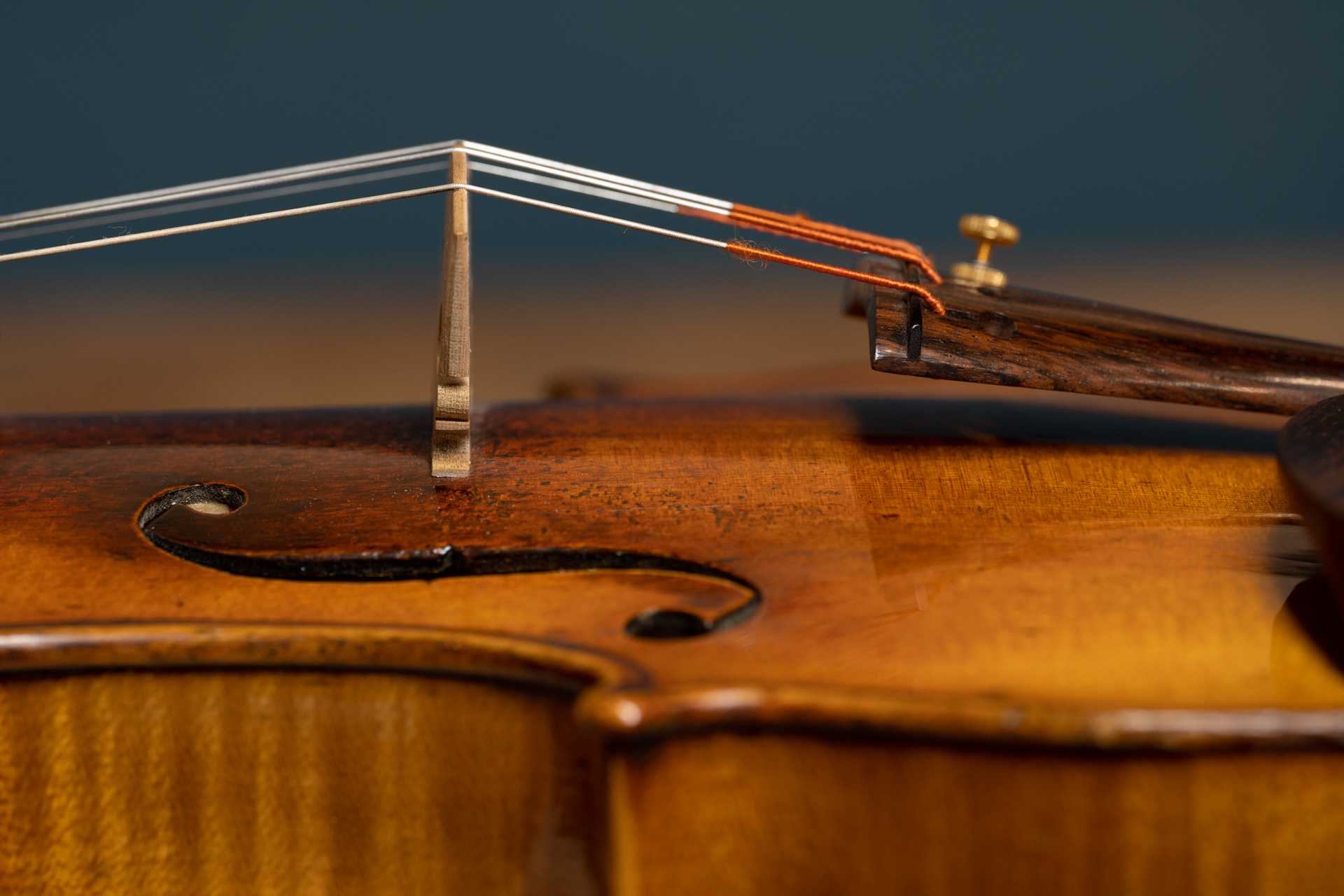
When it makes sense to come to our workshop
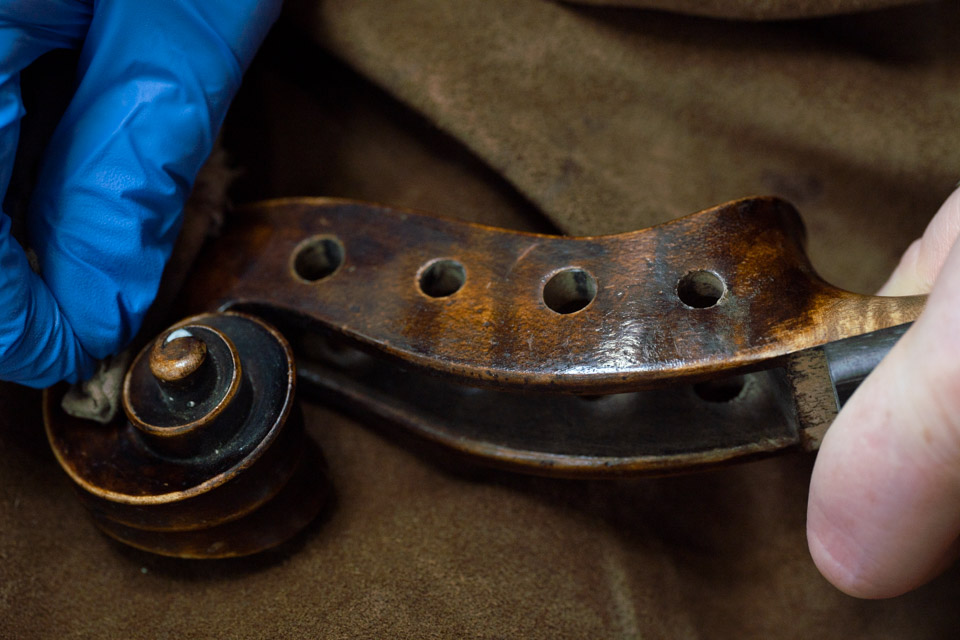
Rosin dust, sweat, and other dirt can build up over time and damage the varnish. If they can no longer be wiped away with a cloth, it’s time for a thorough cleaning.
And this belongs in the hands of professionals because violin varnish can be very sensitive. And improper cleaning can cause a lot of damage.
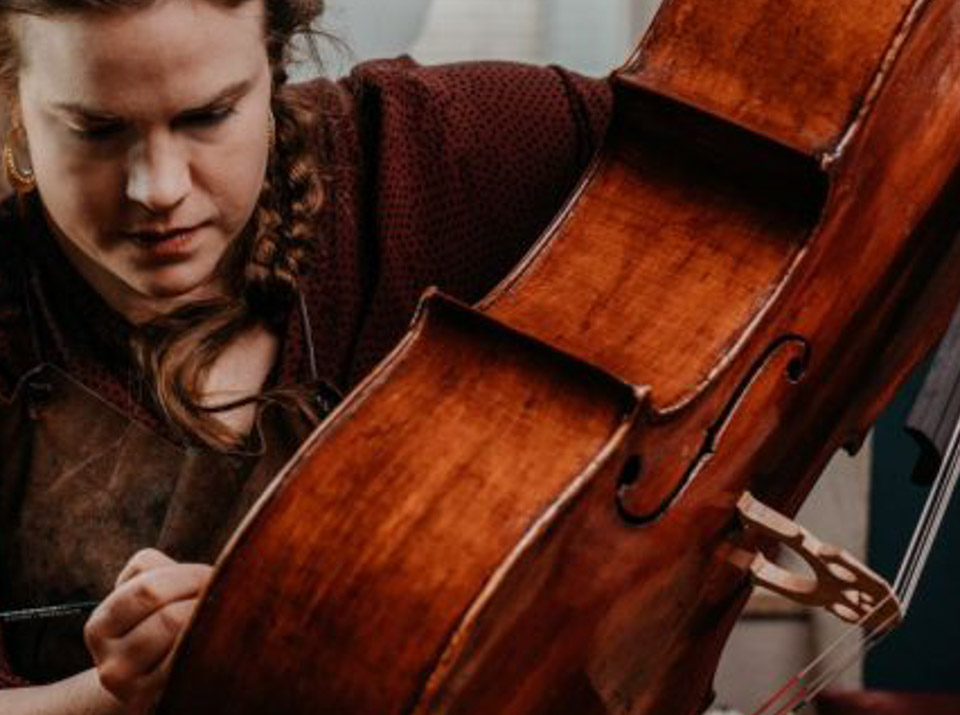
Does your instrument have scratches and blemishes, poorly done old retouches, or bare, worn spots? Then bring it by. It is in the best hands with us!
Varnish retouching with the best materials is a flagship of our workshop because varnishes are Judith`s passion.
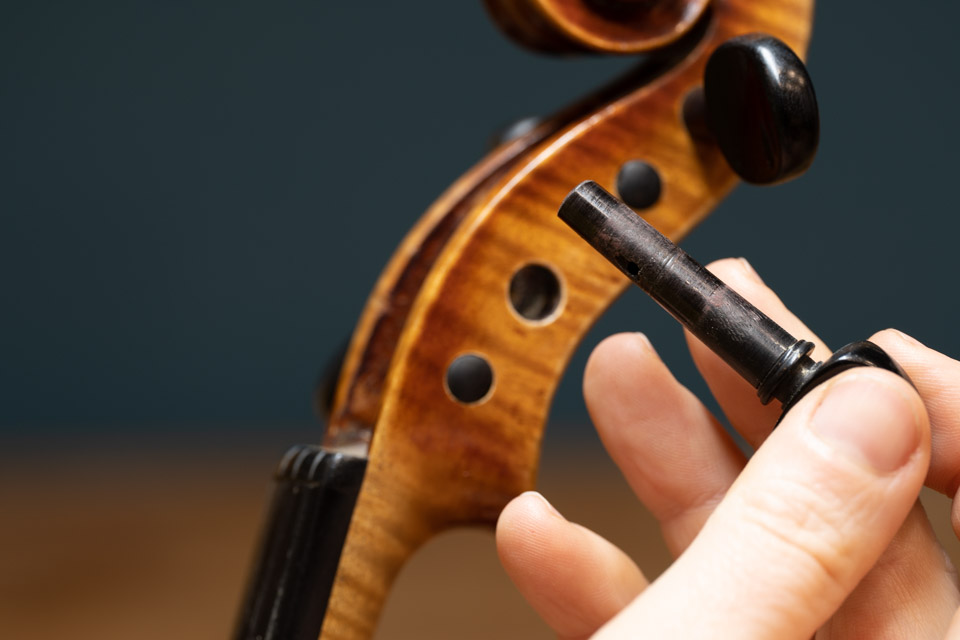
Tuning pegs should neither get stuck nor slip. After all, they are there for tuning.
Sometimes a peg wobbles because the hole is no longer around. Some pegs have never fit properly. It doesn’t matter what the problem should be: We can fix it.
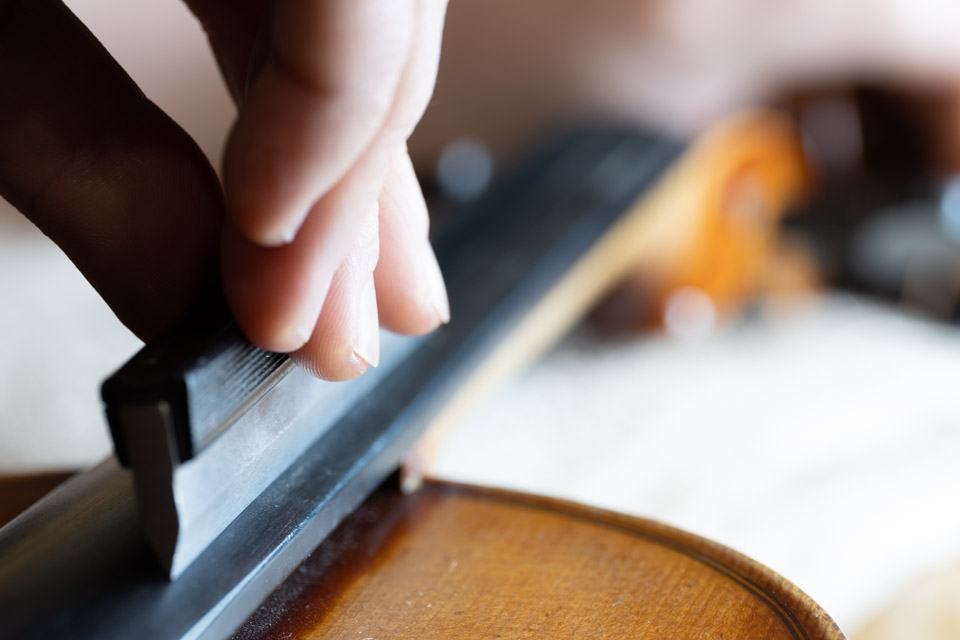
The curvature and position of the fingerboard are closely related to the bridge and its proportions. Thus, the fingerboard has a huge influence on the sound and playability of your instrument.
A fingerboard on an instrument played a lot will eventually get bumps that interfere with playing. For this reason, it is necessary to have the fingerboard planed from time to time. It should be slightly hollow along the way of the strings. Like this, they have enough room to vibrate freely.
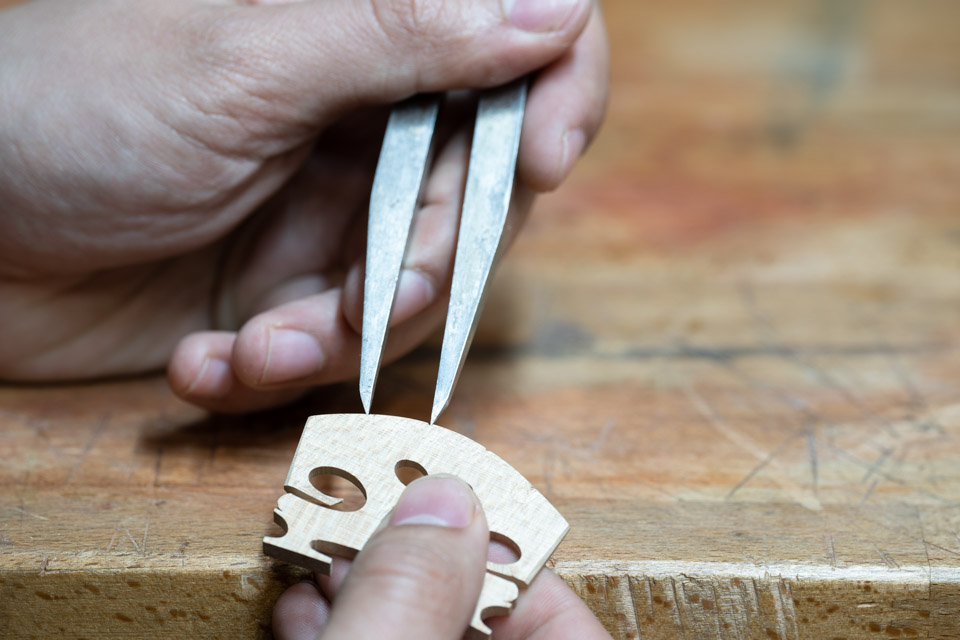
The bridge has several important tasks: It holds the strings in position and determines their distance from each other and the fingerboard. Its upper curve is crucial for how well each string can be reached with the bow.
The bridge also transmits the vibrations of the strings to the body of the instrument and therefore has a big influence on the sound.
Its height, thickness, placement, shape, and, last but not least, the choice of wood are therefore crucial to how well an instrument sounds and plays.
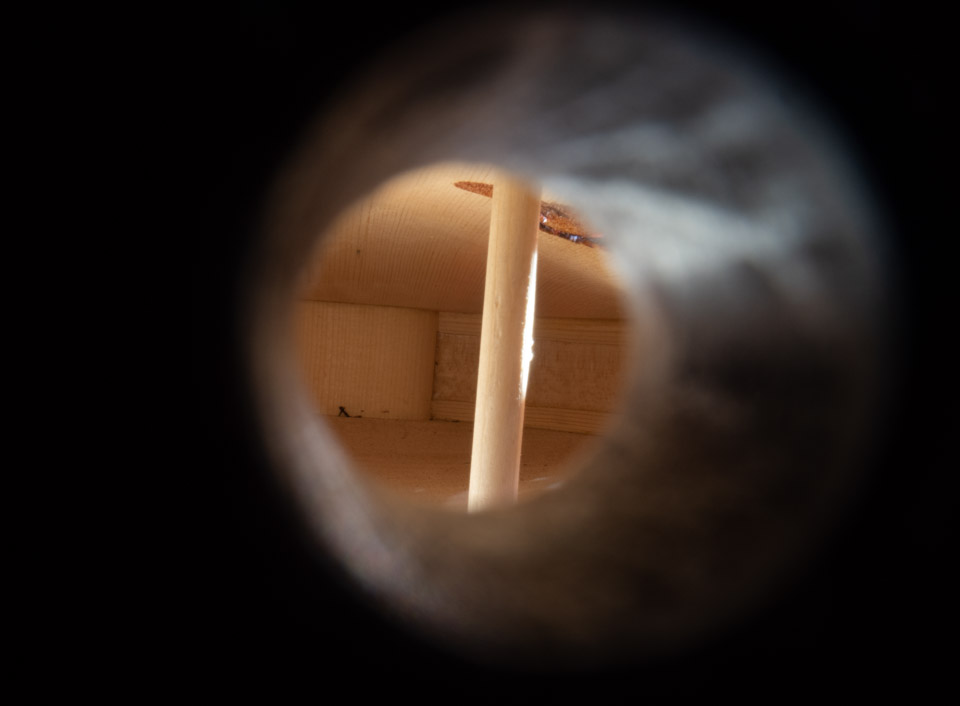
The soundpost often referred to as âme, a french word meaning soul, doesn’t have this name for anything. The slightest changes in position can make huge differences in sound and playability. So it is the first adjustment screw we luthiers look at when a musician is no longer satisfied with the sound of their instrument.
A good soundpost we make of split spruce wood. It stands straight and must fit perfectly with the back and belly. And stand in the correct place with the right tension. The margin in which we can move it to optimize the sound seems very small. But the effect can be immense and has already surprised many.
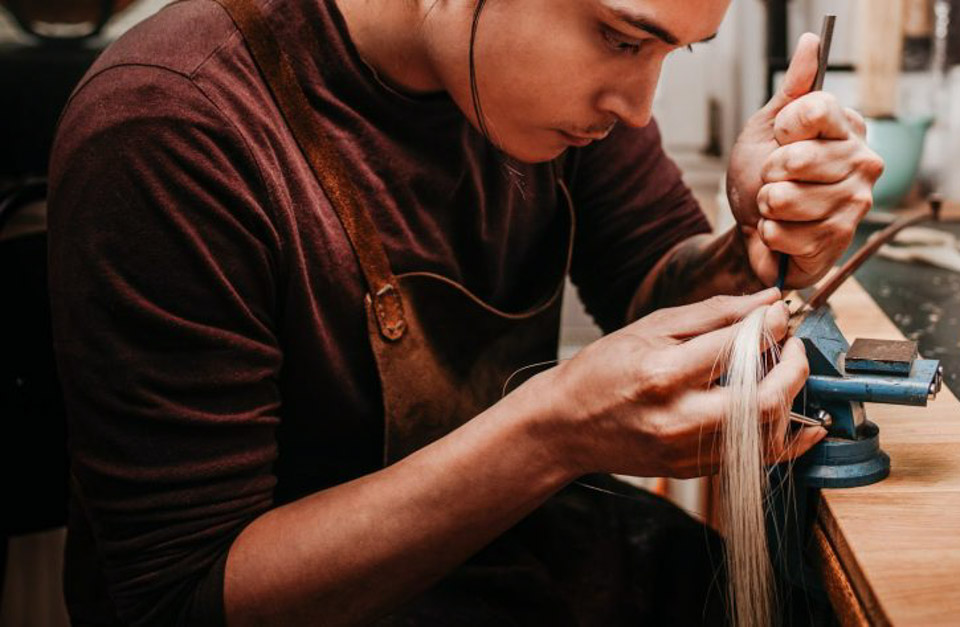
Is there a rushing or whistling sound when you play? Does the bow no longer grip properly, or is it difficult to wind the screw? Maybe it’s time for a rehair!
Look out: Loosened hair can lead to cracks in the bow stick. It is better to go to your violin or bow-making shop once too often if you are unsure whether a rehair is necessary.
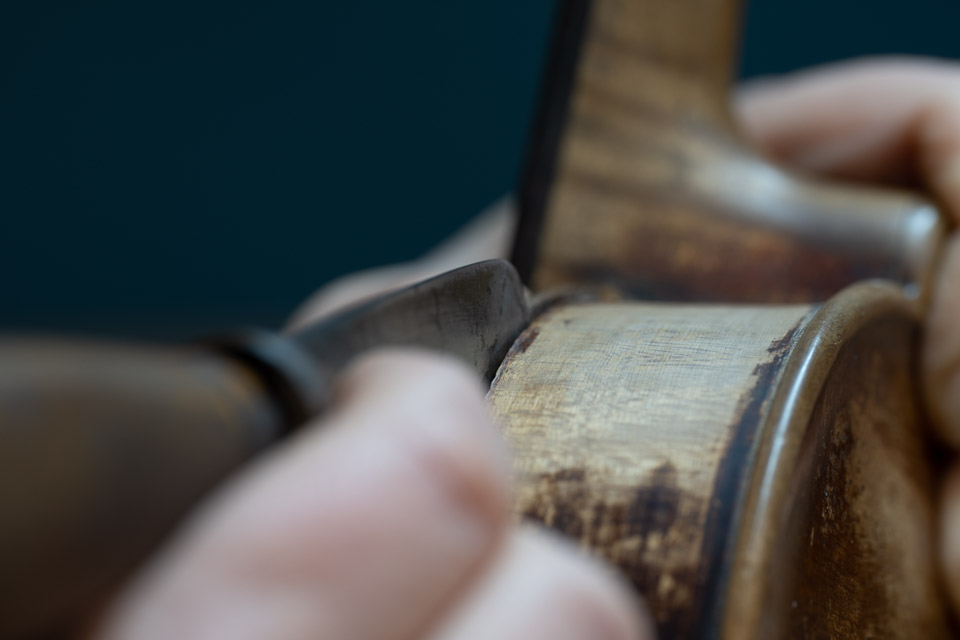
It whirs, it rattles, and it’s annoying?
Background noises can have any number of causes. Often a single action can solve the problem, but sometimes it requires extensive intervention.
What you can check yourself and possibly fix right away:
If you can not find the reason or if it is a problem, such as open edges, cracks, a loose bass bar, a bridge that is too deep, a loose fingerboard, etc., you’d better come to us.
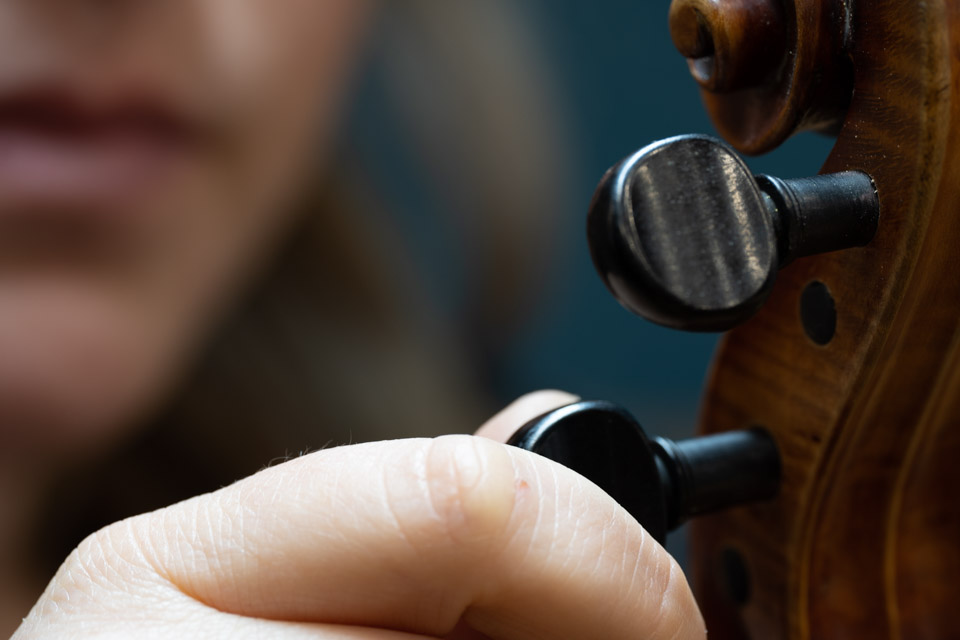
Often only slight adjustments help your instrument to a better sound.
We will discuss which “adjusting screws” can be changed on your instrument during a non-binding visit to our workshop.
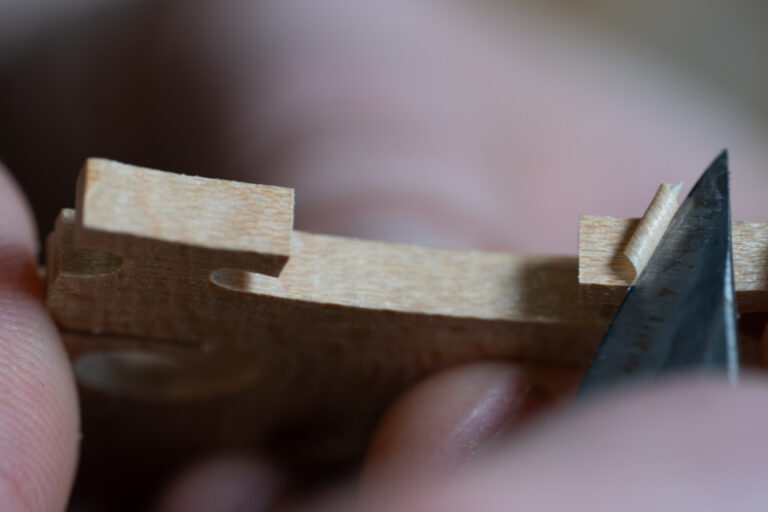
We also offer extensive restorations & repairs.

The bow is often underestimated, but only it brings the sound of bowed instruments to life. A good bow makes a huge difference both in terms of sound and playing technique!
A small excerpt from the history of the bow: